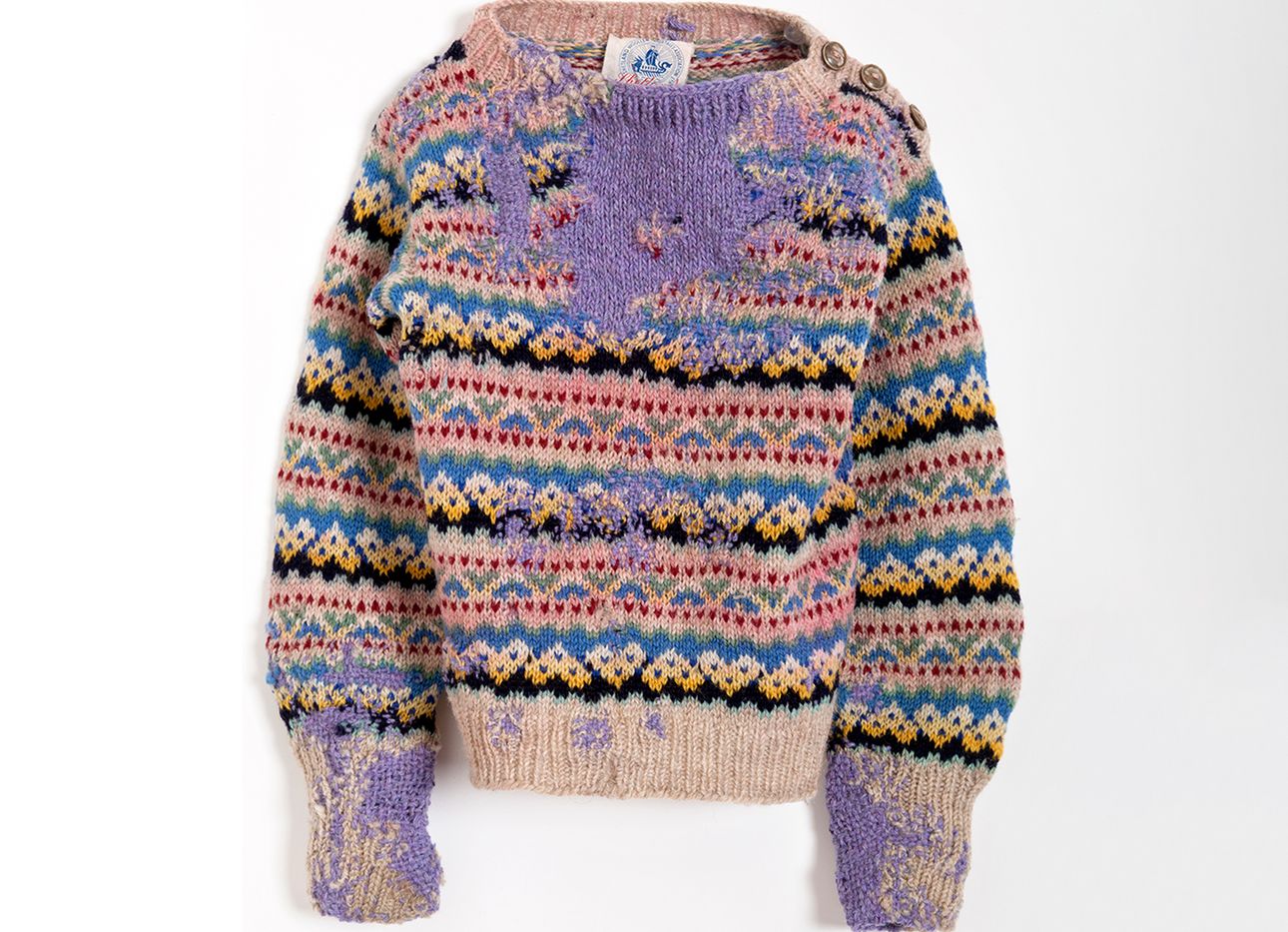
With Darning, Celia Pym Brings the Stories of Clothes to Life
Recent studies attest to what the crafters among us have known for a long time: that the rhythmic, repetitive nature of knitting, crocheting, and needlework makes people feel happier and more relaxed. For London-based textile artist Celia Pym, working with her hands is more than a stress-relieving pastime—it’s instinctive. She grew up in a family where repairing damaged textiles was a practical part of everyday life; since 2007, darning has been her primary focus.
Pym is interested in everyday holes—on clothings’ heels, knees, elbows, or pockets—and the stories they tell about their owners or the garments themselves, which have often been compromised by water, fire, or hungry moths. Using items she collects from individuals and museum archives, she draws attention to areas where fabric has run thin by employing threads of bright, contrasting colors to sew up cavities, resulting in striking splotches that speak to loss, grief, and time. “The more dramatic the damage, the more compelling I find it,” she says.
Since the world went into lockdown, Pym has observed a sharp spike in interest around textile repair as people spend more time at home, refamiliarizing themselves with their possessions. Her mending workshops, now hosted on Zoom, have grown in popularity, and she receives weekly requests for help with mending rediscovered garments. “People want to slow down, and [darning] is therapeutic for them,” she says. To start your own darning project, Pym has a few suggestions: “Don’t bother mending something you don’t really love,” she says. “And second, just begin—if it’s already damaged, you can’t go wrong.”